How a remote rock split China and Japan
September 17, 2012 -- Updated 1509 GMT (2309 HKT)
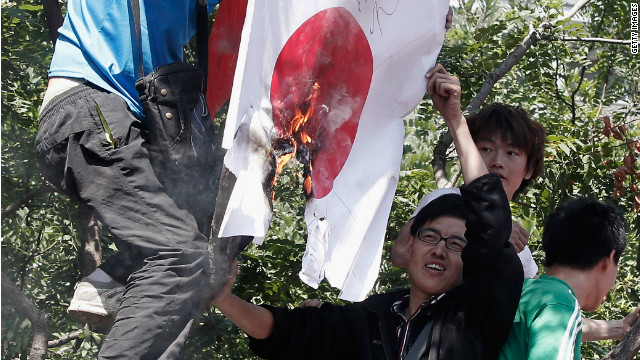
Anti-Japanese protests erupt in China
STORY HIGHLIGHTS
- Latest dispute sparked by Governor of Tokyo's attempts to raise public funds for purchase
- Japanese government stepped in with its own offer to effectively "nationalize" the islands
- The move sparked anti-Japanese protests across dozens of Chinese cities
- China calls for "rational patriotism," Japan's PM briefs senior government officials
He did so without the apparent knowledge or approval of the Japanese government.
Spying an opportunity to
assert Japanese control over the Senkaku islands, or Diaoyu as they're
known in China, Governor Shintaro Ishihara launched an online appeal
fund to buy them from their private owners.
Donations poured in,
prompting a sharp rebuke from China and forcing the Japanese government
to wade into the dispute with its own offer for the contested land.
Who is Shintaro Ishihara?
Ishihara has a long
history of making inflammatory comments about China, so much so that in
1999, when he was appointed Tokyo governor, Japan's then chief cabinet
secretary, Hiromu Nonaka, sought to reassure China that relations would remain "friendly."
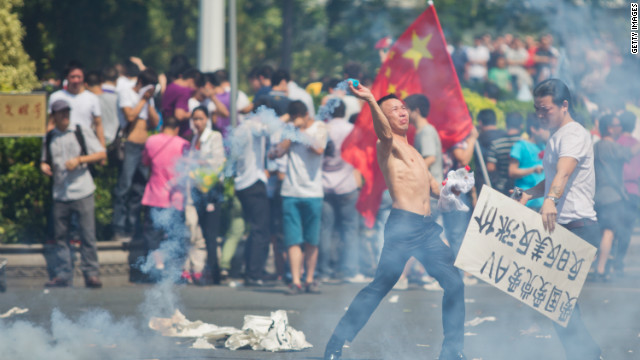 China protests over islands
China protests over islands
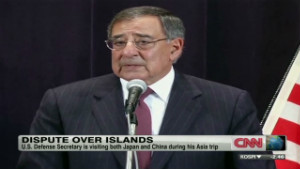 Tensions rise between Japan and China
Tensions rise between Japan and China
Before taking office,
Ishihara was a well-known author whose name became famous in his early
twenties after writing "A Season of the Sun," which won Japan's most
prestigious literary prize.
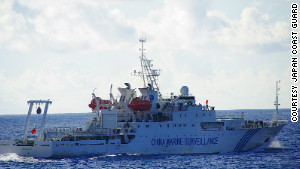 Tensions rise over Asian islands
Tensions rise over Asian islands
He's an outspoken
nationalist who in the past has cast doubt on historians' account of the
1937 Rape of Nanking, in which hundreds of thousands of Chinese were
killed by Japanese troops.
 Why is Japan feuding over islands?
Why is Japan feuding over islands?
After launching the fund, Ishihara likened China's claim to the islands as like "a burglar in Japan's house."
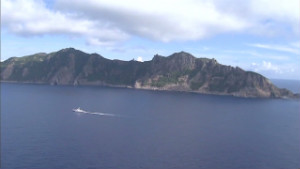 Disputed islands in East China Sea
Disputed islands in East China Sea
What was China's reaction?
Back in June, Chinese
Foreign Ministry spokesman Liu Weimin dismissed Ishihara's attempt to
buy the islands as "irresponsible," and repeated China's ownership
claim.
"The Diaoyu Islands are
China's territory since ancient times," he said. "The willful talk and
action of some Japanese politicians is irresponsible and tarnish and
smears Japan's reputation."
When did the Japanese government step in?
Faced with the prospect
of the islands falling under the jurisdiction of the Tokyo metropolitan
government, the Japanese government stepped in with its own bid for the
disputed islands.
On September 11, Japan's
Chief Cabinet Secretary Osamu Fujimura confirmed that the government
had approved the islands' purchase from private owners for 2.05 billion
yen (US$26.2 million).
In an interview with CNN,
Japanese Prime Minister Yoshihiko Noda claimed there was no territorial
dispute within China and the only question of ownership emanated from
within Japan.
"The Senkaku Islands are
an inherent part of Japanese territory, historically as well as under
international law, so there's no territorial claim issue between the two
countries," he said.
"Right now, it is the
ownership issue -- whether the individual owns these islands, or the
Tokyo metropolitan government or the state. And I think we have to
clearly and solidly explain these stances to the Chinese side."
China responded by
dispatching six patrol ships to the surrounding waters, ignoring a
warning from the Japanese coastguard not to approach. They entered the
disputed waters for a short time before leaving, Japan's coast guard
reported.
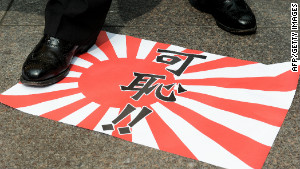 Clinton: Diplomacy to end land disputes
Clinton: Diplomacy to end land disputes
At a press conference,
Ishihara said of the Chinese patrols: "We'd better shoo off those who
walked into someone's home in dirty shoes, we should shoo them away."
 Land disputes await Clinton in China
Land disputes await Clinton in China
"I think China has gone
crazy. We can't put up with their attitude like Mine is mine, but yours
is mine too," he added, in quotes that appeared on the Tokyo
Metropolitan government website.
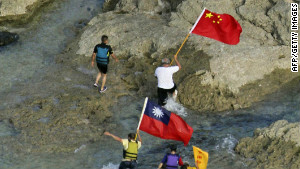 History clouds China-Japan island dispute
History clouds China-Japan island dispute
Citing a government statement, state-run news agency Xinhua said the patrols were "aimed to demonstrate China's jurisdiction over the Diaoyu Islands,"
while the Japanese prime minister said the government would "take all
possible measures to ensure security" around the islands.
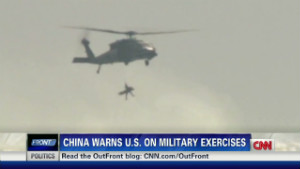 Tensions mount between China and Japan
Tensions mount between China and Japan
How a war of words turned into protests
While the verbal
sparring between the Chinese and Japanese governments has played out in a
series of statements, protesters from both sides have been taking
direct action to assert their countries' control over the islands.
In late August, Japan
deported 14 Chinese protesters who were arrested after five swam ashore
the Diaoyu/Senkaku islands and waved the flags of China and Taiwan. Nine
others aboard the waiting vessel were also detained.
Days later after the
Chinese landing, Japanese activists also made the journey to the remote
islets to raise the Japanese flag, prompting China to lodge "solemn
representations to the Japanese ambassador," according to Xinhua.
The Japanese landing sparked protests by thousands of people in a number of Chinese cities, including Guangzhou, Shenzhen, Shenyang, Hangzhou, Harbin and Qingdao, according to Xinhua.
That was on August 19,
almost one month before violent anti-Japanese protests erupted across
dozens of Chinese cities, forcing the temporary closure of operations at three plants belonging to Japanese electronics company Panasonic.
Background to the dispute
The question of
ownership of the islands extends back to 1895 when Japan says China
ceded sovereignty of the islands when it lost the Sino-Japanese war.
Japan then sold the islands in 1932. During the second World War, the
U.S. administered the islands but in 1972 returned them to Japan as part
of its withdrawal from Okinawa.
China says its ownership
extends back hundreds of years. Analysts say its policy on the islands
has been maintaining the status quo.
According to Xinhua,
"both sides agreed in 1978 to put the issue aside and solve it in the
future, using a guideline described as 'laying aside disputes and
engaging in joint exploitation' to solve territorial issues with
neighboring countries."
"China's proposal is
that we should maintain status quo, neither side should take action to
escalate the differences. Regrettably the Japanese government has
disrespected the Chinese proposal," said Shen Dingli,
the Executive Dean of the Institute of International Studies at Fudan
University in Shanghai, in an interview with the Australian Broadcasting
Corporation.
What happens now?
The Chinese government
has been calling for restraint and "rational patriotism" when it comes
to public protests. The United States has also weighed in on the issue
with U.S. Defense Secretary Leon Panetta urging "calm and restraint on
all sides."
As Panetta spoke, Noda
was telling senior government officials to stay on their guard in
dealing with mass anti-Japanese protests, according to Japanese news
agency Kyodo.
Meanwhile, the prospect
of economic sanctions has been raised in a strongly worded opinion piece
in the state-controlled China Daily newspaper.
Jin Baisong wrote that World Trade Organization rules could be used to limit export of "important materials" to Japan.
"The global financial
crisis increased Japan's reliance on China for its economic well-being.
So it's clear that China can deal a heavy blow to the Japanese economy
without hurting itself too much by resorting to sanctions," said Jin,
deputy director of the department of Chinese trade studies at the
Chinese Academy of International Trade and Economic Cooperation, which
is affiliated to the Ministry of Commerce.

ไม่มีความคิดเห็น:
แสดงความคิดเห็น